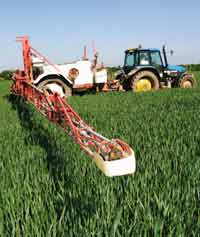Non-chemical controls must be cost-effective, pleads Danish grower

Non-chemical control methods have to be cost-effective or subsidised for growers to use widely, Lars Jorgensen, a Danish grower, said at the Endure conference.
“In Denmark I think we’re 80% there for integrated pest management, but the main problem is when we have to use non-chemical alternatives.
“If there is an alternative to a chemical, it must be efficient and effective, or we need to be forced to use it – there will need to be another incentive if it is going to cost me a lot of money or time.
“But if the solution is good, then it will not be a problem to get it to be used. The problem is where the solution is not so good.”
Non-chemical alternatives needed to be assessed for their environmental impact, he stressed. “It is important they are sustainable too.”
Farming 300ha of arable crops, he made good use of a number of IPM tools and strategies. That included being one of the 4% using an internet-based decision support system in Denmark.
The system includes a monitoring service, which he said made it easier to have the courage not to spray if he didn’t find a particular problem in his fields, and an internet tool to select herbicide and fungicide products and their doses.
“We also use resistant varieties, although as we are also looking for yield, you have to make a compromise between the environment and economics. You should always work to the best for the environment, but also need to find solutions that work economically.”
GPS technology is used for planting, fertiliser spreading and spraying, which helps reduce overlaps and saves about 5% in costs.
More from the Endure conference
Pesticide reduction of 50% achievable in UK
Four on-farm steps to integrated blight control
Eurowheat website provides disease control encyclopaedia
Endure calls for advisers to join

